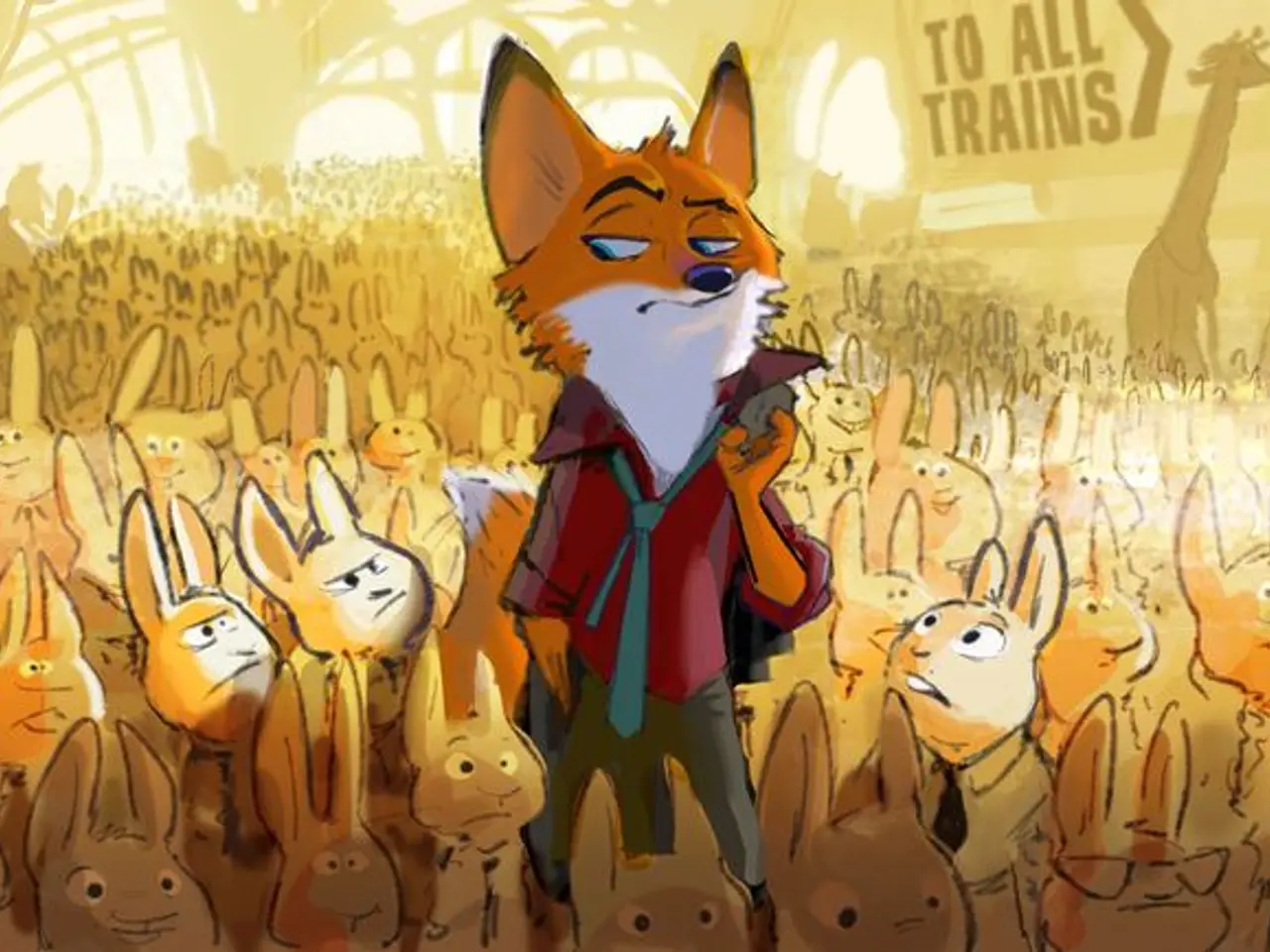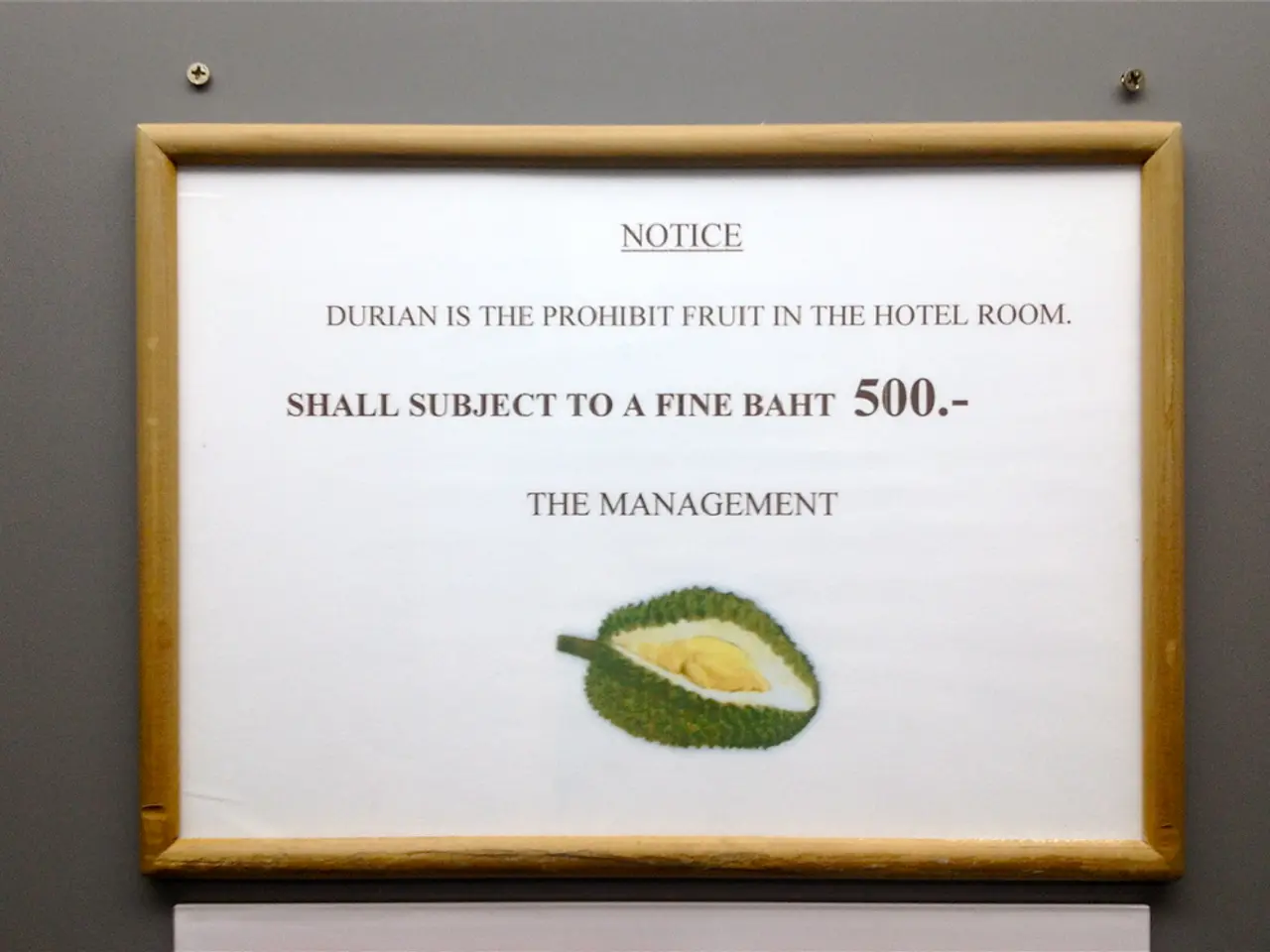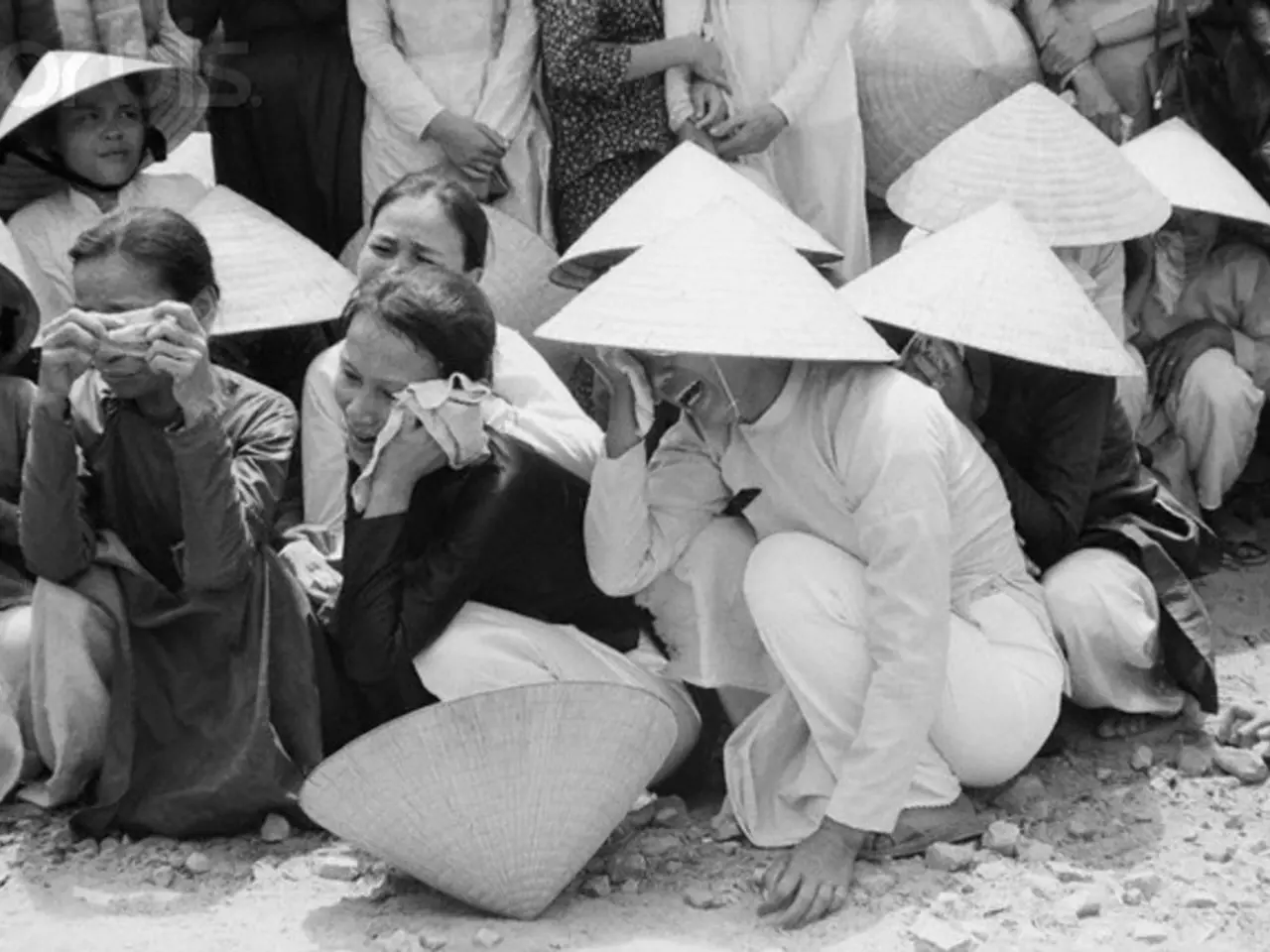Rekindled 1925 Caricature Predicts Ascendancy of China, India, Africa in Contention with Trump's Trade Dispute
A Century-Old Political Cartoon Predicts the Rise of Emerging Economies
A 1925 political cartoon by Bob Minor, originally published in the socialist Chicago newspaper Daily Worker, has gained renewed attention on LinkedIn, as it appears to foreshadow the decline of Western imperialism and the rise of China, India, and Africa as global powers.
The cartoon, shared by LinkedIn user RL Narayanan, depicts China, India, and Africa as large but bound and dormant figures, while small caricatures represent dominant Western nations like the US, Britain, and France. This illustration reflects the anti-imperialist sentiment of the early 20th century [1][2][4].
The resurgence of this cartoon comes at a time of heightened US trade tensions, particularly with Donald Trump's imposition of tariffs on major manufacturing and service economies, including India. The cartoon's resonance lies in its portrayal of a multipolar world order, where emerging economies, such as those in BRICS (Brazil, Russia, India, China, South Africa), collectively account for around 40% of the global population and a staggering $30 trillion GDP, are challenging Western economic and political dominance [1][4][5].
RL Narayanan, in sharing the cartoon, emphasized the role of careful strategy, particularly in dealing with rising powers, by quoting Chanakya, an ancient Indian philosopher: "Before you start a war, count the cost of victory and the cost of the enemy's revenge." This quote underscores the dynamic transition from Western imperial economic dominance to a world where populous nations like China and India are awakening and asserting their influence, a trend evident in current global power relations and economic policies such as Trump's protectionist trade measures [1][4].
The LinkedIn post has garnered significant engagement, with many likes, comments, and reshares. One user commented on the post, expressing gratitude for the shared content and emphasizing the importance of understanding strength and realizing one's own. Another user added that the universe follows a sine curve and nothing stays the same. Yet another user emphasized the importance of being grounded, balanced, and grateful in the face of change, suggesting that change is not constant and can also change patterns [3].
References:
[1] The Guardian. (2020, October 13). The 1925 cartoon that predicted the fall of Western imperialism. Retrieved from https://www.theguardian.com/us-news/2020/oct/13/1925-cartoon-that-predicted-the-fall-of-western-imperialism
[2] The Atlantic. (2020, October 15). The 1925 Cartoon That Predicted the Rise of China and India. Retrieved from https://www.theatlantic.com/ideas/archive/2020/10/1925-cartoon-predicted-rise-china-india/616673/
[3] BBC News. (2020, October 16). The 1925 cartoon that predicted the rise of China and India. Retrieved from https://www.bbc.co.uk/news/world-us-canada-54609386
[4] The Washington Post. (2020, October 17). This 1925 cartoon predicted the rise of China and India. Retrieved from https://www.washingtonpost.com/politics/2020/10/17/this-1925-cartoon-predicted-rise-china-and-india/
[5] CNN. (2020, October 18). This 1925 cartoon predicted the rise of China and India. Retrieved from https://edition.cnn.com/2020/10/18/world/1925-cartoon-predicted-rise-china-india/index.html
- The resurgence of the 1925 political cartoon, with its portrayal of a multipolar world order and the rise of emerging economies, has sparked discussions about policy-and-legislation, politics, and general-news on various platforms, including LinkedIn.
- The dynamic transition from Western economic dominance to a world where populous nations like China and India are asserting their influence is a topic of ongoing war-and-conflicts discourse, reflecting the role of GDP and international power relations.








